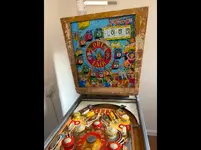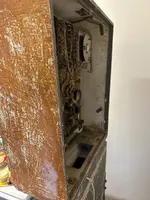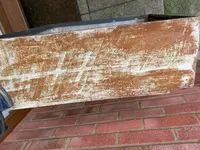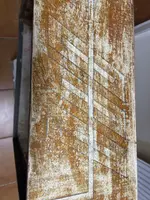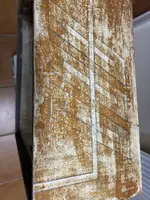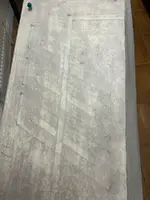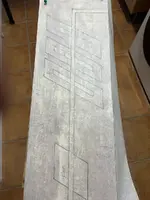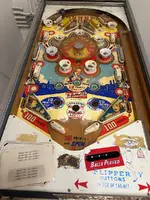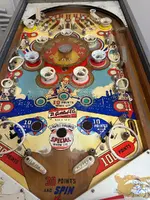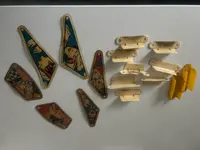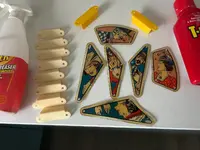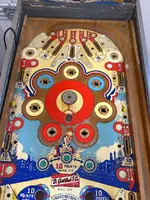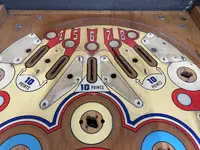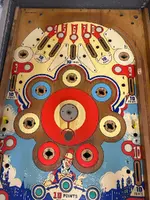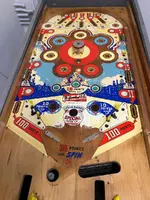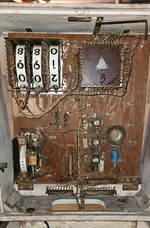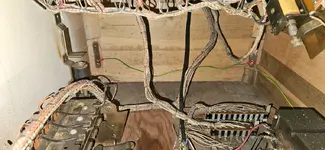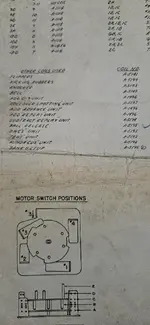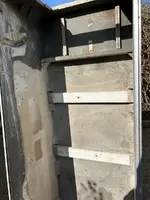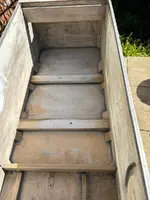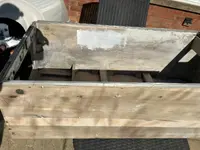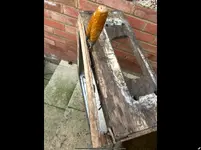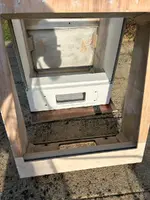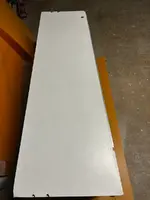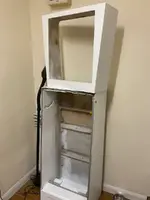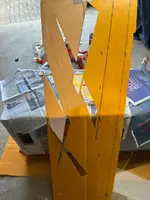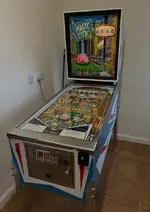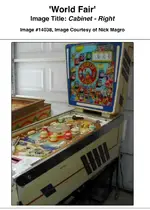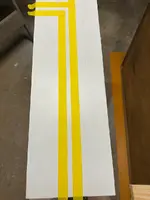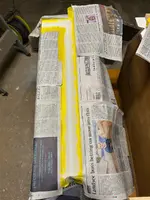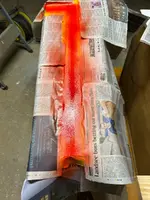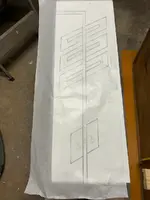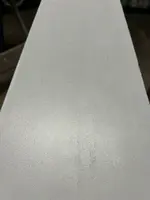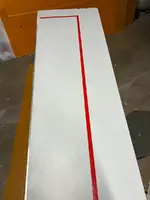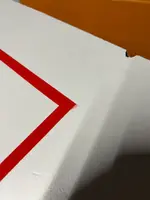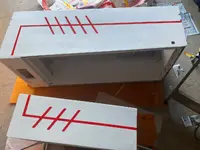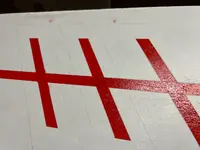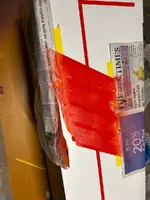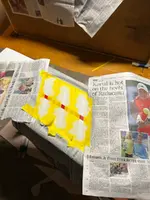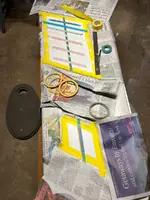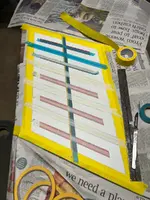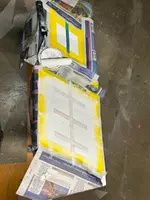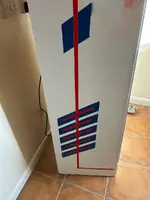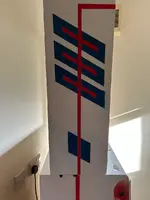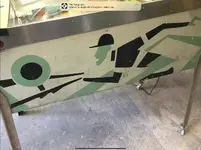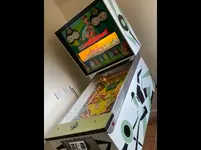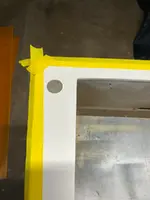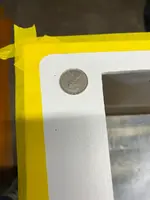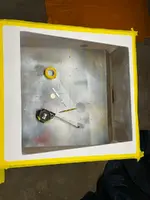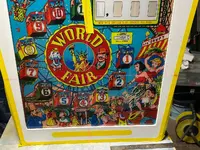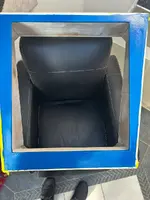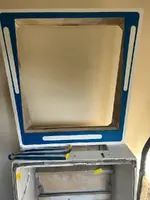Although it’s not my first rodeo, it’s my first blog. Maybe it’s a NY resolution thing, either way I thought I’d give it a go. It’s not an ‘Ant-H’ resto it’s a ‘let’s smarten it up a little’ and play it. Budget is important becasue, if I come to sell it in the future, I’d like to get a little bit back for my efforts. No doubt any profit will buy another one!
Background to the buying the machine is that it was sold to a pal of mine 3 hours away from me. He spotted it in ‘Marketplace’ 5 minutes from my house ! However, first come first served and he took it away and got it as far as working. I’ve just finished a Wms ‘Magic City’, needed something to do (long time retired) and missed the World Fair I had pre-lockdown. I’d considered buying that one back but the owner was, understandably, reluctant to let it go. Thus I bought the one from 5 minutes away for a considerable amount more than the £50 my pal paid
! However, first come first served and he took it away and got it as far as working. I’ve just finished a Wms ‘Magic City’, needed something to do (long time retired) and missed the World Fair I had pre-lockdown. I’d considered buying that one back but the owner was, understandably, reluctant to let it go. Thus I bought the one from 5 minutes away for a considerable amount more than the £50 my pal paid
It’s a very cool machine, themed from the New York World Fair of ‘64. The aim of the game is to light all the gondola cars in order to light ‘replay’. It’s a tough game, but fun and achievable.
Enough waffle let’s take a look at what I bought;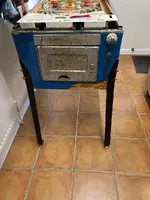
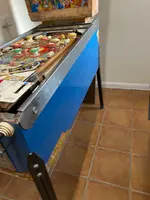
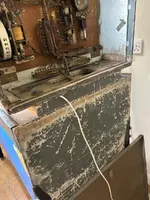
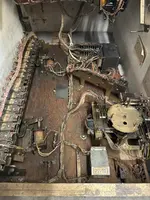
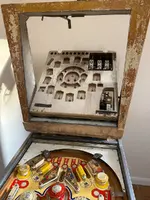
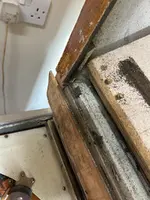
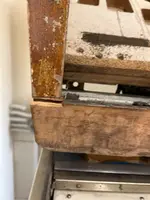
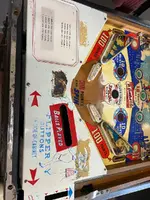
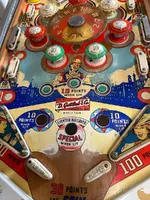
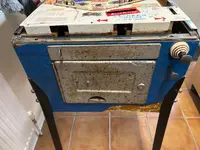
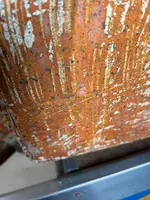
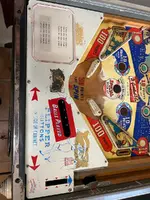
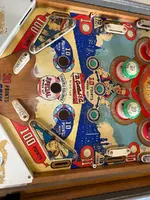
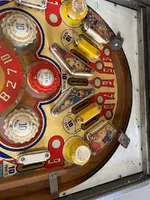
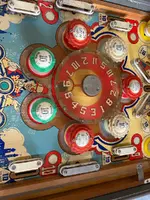
As can be seen, it’s a dog! Not the worst I’ve had but coincidentally my other World Fair had been ‘wrapped’ in Formica sheets, which is the blue panelling affixed to the whole cabinet but removed from the head. The head has its own problems as it’s delaminating and has been previously assaulted by a regiment of woodworm. The backglass isn’t too clever either, more of that in later posts………
Background to the buying the machine is that it was sold to a pal of mine 3 hours away from me. He spotted it in ‘Marketplace’ 5 minutes from my house
It’s a very cool machine, themed from the New York World Fair of ‘64. The aim of the game is to light all the gondola cars in order to light ‘replay’. It’s a tough game, but fun and achievable.
Enough waffle let’s take a look at what I bought;















As can be seen, it’s a dog! Not the worst I’ve had but coincidentally my other World Fair had been ‘wrapped’ in Formica sheets, which is the blue panelling affixed to the whole cabinet but removed from the head. The head has its own problems as it’s delaminating and has been previously assaulted by a regiment of woodworm. The backglass isn’t too clever either, more of that in later posts………

